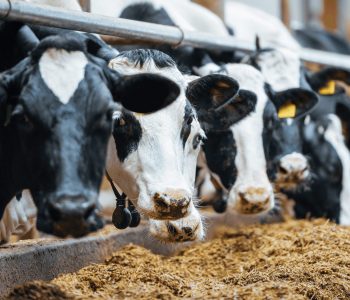Understanding Anionic Diets in Ruminants: A Key Strategy for Preventing Hypocalcemia
Anionic diets are an essential nutritional tool used in dairy cattle, particularly during the close-up dry period (the final 2–3 weeks before calving). These diets are strategically formulated to prevent hypocalcemia—a common metabolic disorder in dairy cows often referred to as milk fever.
Milk fever occurs when the demand for calcium to support colostrum and milk production exceeds the cow’s ability to mobilize calcium from its bones or absorb it from the gut. This can result in low blood calcium levels, leading to muscle weakness, decreased feed intake, and in severe cases, recumbency or even death.
How Anionic Diets Work
The principle behind anionic diets lies in manipulating the Dietary Cation-Anion Difference (DCAD), which is calculated using the concentrations of specific minerals:
DCAD = (Na⁺ + K⁺) – (Cl⁻ + S²⁻)
By adding anionic salts—such as ammonium chloride, calcium sulfate, or magnesium sulfate—the diet becomes slightly acidic, which induces a mild compensated metabolic acidosis in the cow. This acidotic state makes the animal’s parathyroid hormone (PTH) more effective, improving the mobilization of calcium from bones and the activation of vitamin D for increased calcium absorption from the intestines.
Benefits of Anionic Diets
-
Prevention of clinical and subclinical hypocalcemia
-
Improved uterine tone and muscle function, reducing the risk of retained placenta and metritis
-
Enhanced dry matter intake and postpartum performance
-
Better immune function and overall health status
Implementing Anionic Diets
The success of anionic diets depends on proper formulation and monitoring:
-
Diet Formulation: Anionic salts must be balanced carefully to reach a target DCAD between -100 to -150 mEq/kg of dry matter. This requires precise ration formulation and regular updates based on forage mineral content.
-
Palatability: Some anionic salts can reduce feed palatability. Blending salts, using palatable carriers, and gradual introduction are useful strategies.
-
Monitoring Urine pH: One of the most effective tools to assess the impact of anionic diets is measuring urine pH, ideally 6.0–6.5 for Holsteins. This gives an indirect measure of metabolic acid-base status.
Urine pH should be checked regularly during the close-up period to ensure the diet is having the desired effect.
-
Timing: Anionic diets are usually fed for the final 21 days prepartum. Feeding them too early or for too long can negatively impact performance.
Potential Challenges
-
Over-acidification can lead to reduced feed intake or metabolic issues.
-
Incorrect balancing of minerals may result in imbalances affecting cow health.
-
Requires trained personnel and frequent monitoring to ensure success.
Final Thoughts
Anionic diets are a powerful, research-supported strategy to manage calcium metabolism and prevent milk fever in dairy cows. Their use contributes significantly to better transition cow health, improved production outcomes, and overall herd profitability. However, they must be implemented with care, monitoring, and nutritional expertise.
